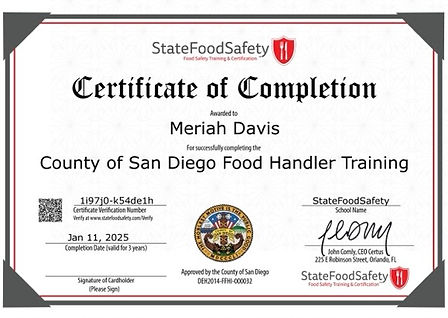Safety & Risks of Placenta Ingestion
Your safety is my top priority, and I follow strict safety, sanitation, and handling protocols to ensure your placenta is processed in a way that minimizes risks.
However, some factors may be out of my control, and in rare cases, I may not be able to encapsulate your placenta. Below, I’ll explain what I do to keep your placenta safe and the circumstances that could prevent encapsulation.


My Commitment to Safety
I use professional food-grade equipment, follow OSHA-compliant bloodborne pathogen protocols, and thoroughly sanitize all surfaces and tools to eliminate the risk of contamination.
When handled properly, placenta encapsulation is very safe. However, certain conditions could make a placenta unsafe for consumption.

Potential Risks & How We Prevent Them
✔ Sanitary Conditions – I prepare each placenta in a clean, sanitized workspace to prevent bacterial or viral contamination.
✔ Proper Dehydration & Storage – Your placenta will be dehydrated at a safe temperature to prevent mold or bacterial growth. It will never be ground or encapsulated before it is fully dehydrated.
✔ Avoiding Cross-Contamination – All tools and surfaces are thoroughly disinfected to prevent the spread of bloodborne pathogens. Only one placenta is processed at a time.
✔ Safe Placenta Handling – Proper storage is essential! Keeping your placenta on ice after birth and following storage guidelines helps ensure it remains safe for encapsulation.
Reasons I May Not Be Able to Encapsulate
In some cases, placentas may not be safe for consumption. These include:
🚫 Improper Storage – If the placenta has been left at room temperature for more than 4–5 hours without being placed on ice, or if it has been in the refrigerator for more than 4-5 days without freezing, it may no longer be safe.
🚫 Pathology Testing – If your placenta has been sent to pathology, there is a risk of contamination from chemicals, non-sterile equipment, or even mix-ups with another placenta.
🚫 Infections or Medical Concerns – If you had a uterine infection (such as chorioamnionitis) during labor, the placenta may contain harmful bacteria.
🚫 Substance Use – Heavy smoking, drug use, or certain high-binding medications during pregnancy may make placenta consumption unsafe.

🚫 Abnormalities – Conditions like choriocarcinoma (placental cancer) or certain genetic disorders may mean the placenta is not suitable for encapsulation.
🚫 Unusual Placental Appearance – If the placenta shows mucousy or stringy blood or other signs of contamination, encapsulation may not be recommended.

What You Can Do to Help Keep Your Placenta Safe
✔ Plan ahead – Bring a small cooler to the hospital or birth center so your placenta can be safely stored on ice.
✔ Label your placenta – Ensure hospital staff knows you are keeping your placenta.
✔ Refrigerate or freeze promptly – If you are not ready for immediate encapsulation, the placenta must be refrigerated (up to 4-5 days) or frozen for long-term storage.
✔ Communicate with me – If any concerns arise about your placenta, I am happy to discuss whether encapsulation is still an option.
I am committed to providing a safe, supportive, and professional experience. While most placentas are perfectly fine for encapsulation, I will always prioritize safety above all else.
If you have any questions, please reach out!
